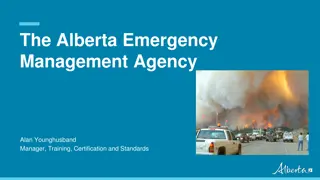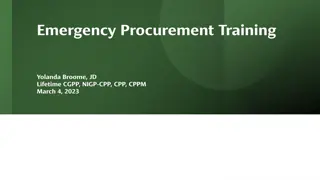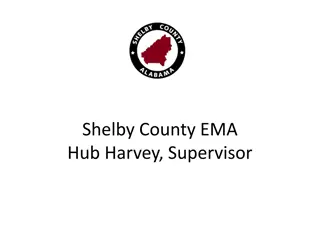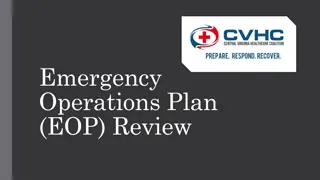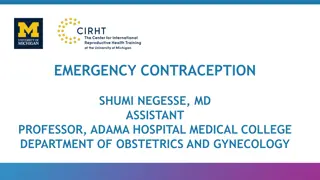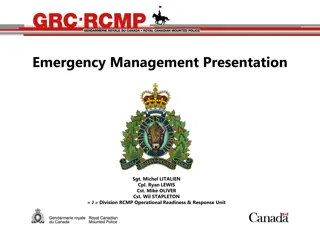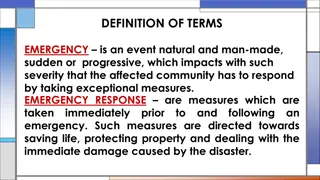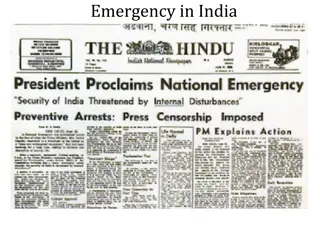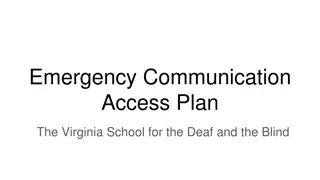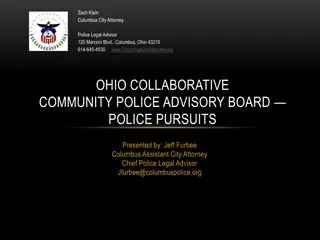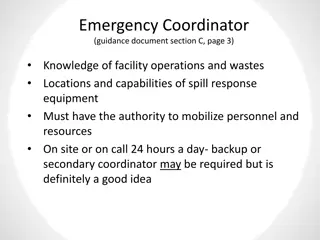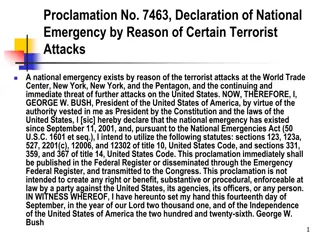Understanding Emergency Management: A Comprehensive Overview
Emergency management involves organized planning and resource allocation to mitigate, prepare for, respond to, and recover from various hazards, both natural and man-made. The goal is to save lives, prevent injuries, and protect property and the environment. The phases include preparedness, response, mitigation, and recovery, with preparedness encompassing actions taken before an emergency occurs such as education, training, drills, and contingency planning.
Download Presentation

Please find below an Image/Link to download the presentation.
The content on the website is provided AS IS for your information and personal use only. It may not be sold, licensed, or shared on other websites without obtaining consent from the author. Download presentation by click this link. If you encounter any issues during the download, it is possible that the publisher has removed the file from their server.
E N D
Presentation Transcript
WHAT IS EMERGENCY MANAGEMENT?
Emergency Management is a course of action designed through Organized analysis, planning, decision making, and assignment of available resources put in place to: mitigate (lessen the effect of or prevent) prepare for, respond to, and recover from the effects of all hazards (natural and man-made).
An Emergency is a serious, unexpected, and often dangerous situation that poses an immediate risk to health, life, property, or environment that requires immediate action
The goal of emergency management is to save lives, prevent injuries, and protect property and the environment if an emergency occurs
PHASES: Preparedness PREPAREDNESS RESPONSE Mitigation Response RECOVERY MITIGATION Recovery
PHASE1: PREPAREDNESS PREPAREDNESS
Includes plans and preparations made to save lives, to protect property and to help response-and-rescue operations. Preparedness actions take place before before the emergency occurs.
EDUCATION & TRAINING EVACUATION DRILLS EMERGENCY PLANNING EQUIPMENT STOCKING CONTINGENCY PLANNING (BCP) SAFETY ASSESSMENT
Your preparation should include plans to: Alert staff members and customers to emergencies as they arise. (Do you have an alarm system? does it work?)
Your preparation should include plans to: Identification of Exits and Emergency Exits Ensure that the number of exit routes is adequate based on the number of employees, the size of the building, its occupancy, and the arrangement of the workplace.
Your preparation should include plans to: Ensure that the placement and hinging of doors are appropriate Ensure that doors used to access exit routes have side hinges and swing in the direction of travel (depending on occupancy and hazard areas).
Your preparation should include plans to: Have the necessary equipment needed for specifies emergencies. (First Aid Kits, fire extinguishers, wheel chairs/stretchers etc)
Your preparation should include plans to: Developing a BCP (Business Continuity Plan). How will we operate if our facility is destroyed or if you have to shut down operations for a long period?
Your preparation should include plans to: Communicate with staff and the wider public if there is an emergency.
Your preparation should include plans to: Manage, evacuate persons with disabilities
Your preparation should include plans to: Have a plan for ordering or storing Emergency Supplies - such as plywood, storm shutters, waterproofing supplies, and sandbags at your facility.
Your preparation should include plans to: Facilitate continued operation Do you have a back up POWER & WATER SUPPLY. HOW LONG WILL IT LAST?
Your preparation should include plans to: Store and maintain company records/files
Your preparation should include plans to: Implement a disaster Response and recovery team
It is actions taken prior to an emergency to facilitate response and promote a sense of readiness
Your PREPERATION plan should be developed and centered around each disasters that will affect the organization
PHASE2: RESPONSE RESPONSE
RESPONSE is simply the activation of your PREPAREDNESS PLAN
Does everybody know the role they play in the emergency plan? Includes actions taken to preserve life and property. Each RESPONSE will be somewhat different based on the type of emergency.
RESPONSE - activities are done during the emergency CASEVAC RESCUE EVACUATION FIRE FIGHTING RELOCATING
It is important to note that your safety and well being in any emergency is dependent on not only how prepared you are but also how you are to act in a crisis
Actions taken to return to a NORMAL NORMAL or even SAFER SAFER situation.
Recovery activities take place after the emergency situation. It includes: Roof Repairs Cleaning up Rebuilding Drainage Construction Getting utilities in order
AN OUNCE OF AN OUNCE OF PREVENTION IS PREVENTION IS BETTER THAN A BETTER THAN A POUND OF CURE. POUND OF CURE.
This includes activities which: Prevents an emergency Reduce the chance of an emergency happening Reduce the effects of the emergency situation
Looking at the events and taking a course of action aimed at reducing the likelihood of the event SHOCK ABSORBERS - JAPAN
Mitigation activities can take place BEFORE and AFTER emergency


